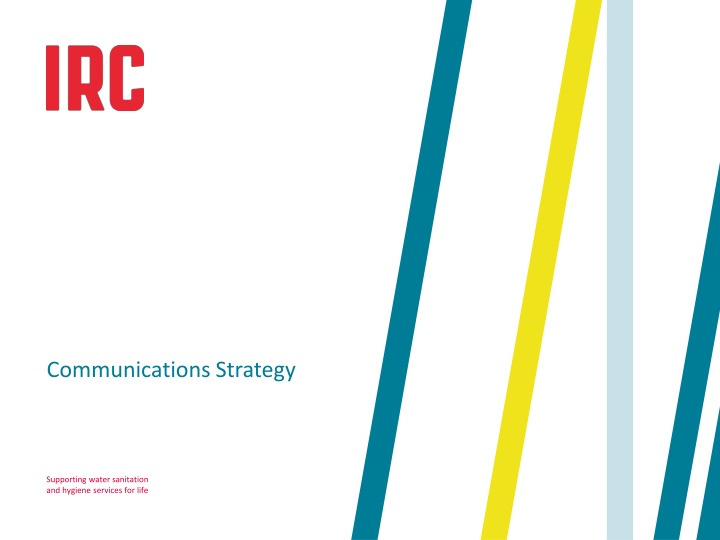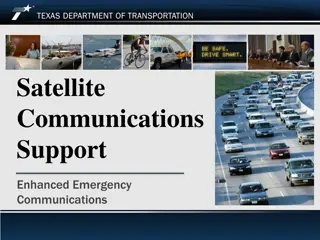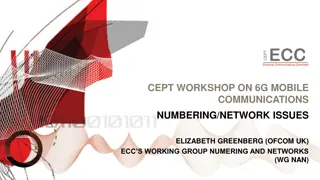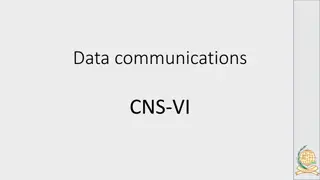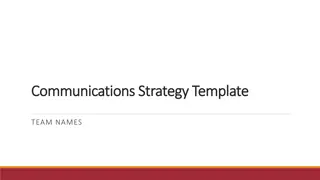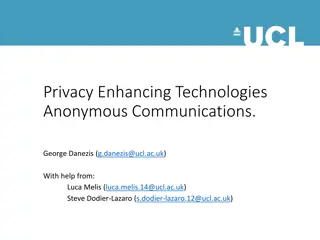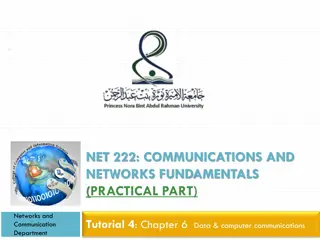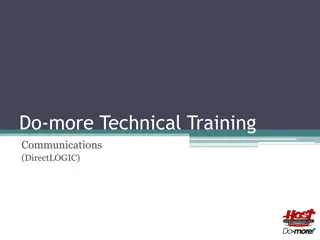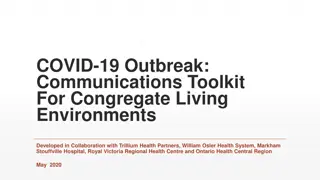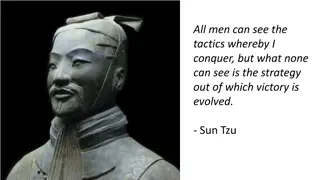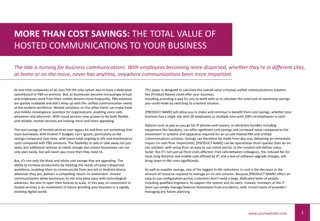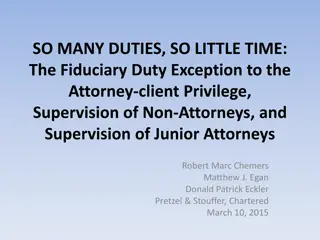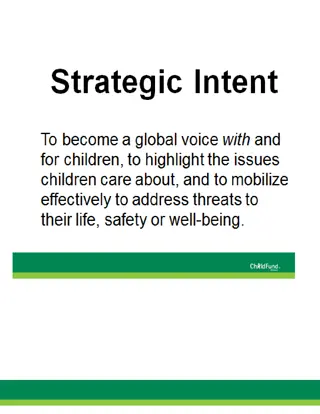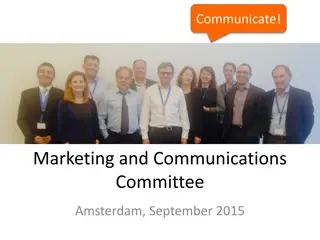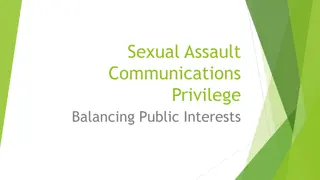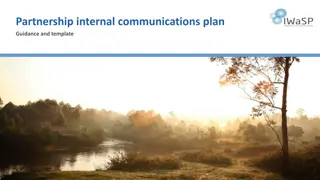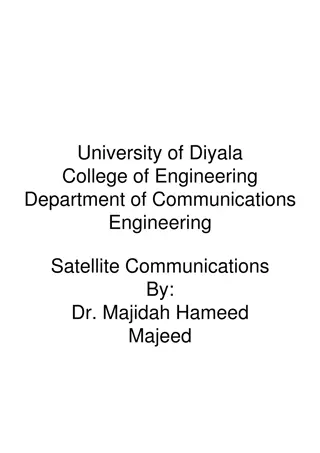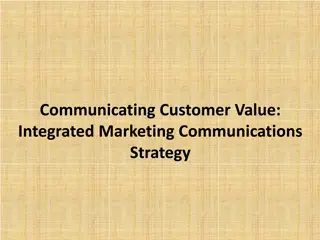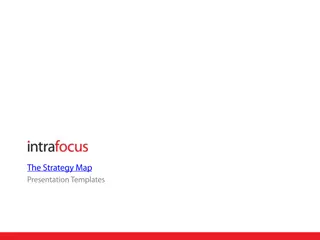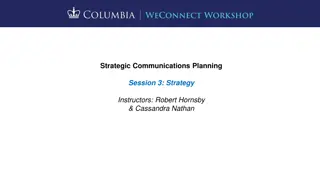Communications Strategy
This presentation by Zoe Ann Olson delves into the definition of disability under the Fair Housing Act, including physical and mental impairments, major life activities, and what constitutes reasonable modification and accommodation. It also provides HUD guidance on these matters.
Download Presentation

Please find below an Image/Link to download the presentation.
The content on the website is provided AS IS for your information and personal use only. It may not be sold, licensed, or shared on other websites without obtaining consent from the author.If you encounter any issues during the download, it is possible that the publisher has removed the file from their server.
You are allowed to download the files provided on this website for personal or commercial use, subject to the condition that they are used lawfully. All files are the property of their respective owners.
The content on the website is provided AS IS for your information and personal use only. It may not be sold, licensed, or shared on other websites without obtaining consent from the author.
E N D
Presentation Transcript
Communications Strategy Supporting water sanitation and hygiene services for life
COMMUNICATIONS STRATEGY Contents This tool will guide you through the process of developing a communication strategy. The process involves some prep work, some workshop time and some follow-up to finalise the strategy. In the following slides you will find: Answers to frequently asked questions, including: Why are we doing this? Who should be involved? And how do we do it? Required prep work defining SMART programme objectives and understanding the context, in particular the stakeholder analysis. Guidance on the steps in developing a communications strategy. Selecting programme objectives (3 max) to focus the strategy around. Identifying and analysing target audiences. Crafting key messages. Identifying appropriate channels and accompanying products. Operationalising the strategy. For each step, there are instruction slides with tips and links to additional resources. When you are done you can delete these. The result will be your strategy.
COMMUNICATIONS STRATEGY FAQ Why a communications strategy? To help you and your team use communications more effectively to achieve your programme objectives and ultimately your organisations goals. To build consensus among programme members on direction and messages and strengthen understanding of the role and value of communications in their work. To take advantage of the knowledge and skills of all members of the group and grow experience and expertise together.
COMMUNICATIONS STRATEGY FAQ How do we do it? This toolkit takes you through a step by step process of collectively thinking through and agreeing on the key components of a strategy (objectives, audiences, messages, channels and products). Each step builds on the one before: For large teams where meeting in person is feasible, we recommend you develop your initial strategy in 2 full-day team workshop sessions (see sample agenda on slides 5 & 6). You will also need to allocate 1 to 2 days of staff time for prep work and a half day for the clean up, presentation and review the final strategy. The strategy should be reviewed and updated annually at a minimum and ideally more frequently. For more dispersed teams, we recommend you do the steps over a series of virtual meetings in a planned, time-bound fashion (e.g., one per week until it s done!) (see sample agenda on slides 7 & 8). You will need to assign smaller working groups to do the activities off-line. For smaller teams, we recommend you have one or two individuals prefill the strategy and then meet to present initial thinking and develop consensus.
COMMUNICATIONS STRATEGY Prep work Sample agenda for 2-day workshop Activity Time requirement Day 1 5.5 hours + 2 hours for breaks Intro 30 min Step 1: prioritising programme objectives 1 hour plenary Coffee break 30 min Step 2: Identifying & prioritising audiences, Activity 1 1 hour group work Lunch 1 hour Step 2: Audiences, Activity 2 1 hour group work Step 2: Presentation & feedback 30 min plenary Coffee break 30 min Step 3: Crafting messages, Activity 1 1 hour group work
COMMUNICATIONS STRATEGY Prep work Sample agenda for 2-day workshop Activity Time requirement Day 2 5.5 hours 2+ 2 hours for breaks Present back results from Messages Activity 1 30 min Step 3: Messages, Activity 2 1 hour group work Coffee break 30 min Messages, Activity 2 present & feedback 30 min plenary Step 4: Identifying channels & products, Activities 1 30 min group work Lunch 1 hour Step 4: Identifying channels & products, Activities 2 - 3 1 hour group work Channels & products - present & feedback 30 min plenary Coffee break 30 min Step 5: Operationalising 1 hour group work Wrap-up responsibilities, action points & deadlines 30 min
COMMUNICATIONS STRATEGY Prep work Sample agenda for virtual sessions Activity Time requirement Session 1 1.5 hours meeting + 2 homework Intro 20 min Step 1: prioritising programme objectives 1 hour plenary Intro to audiences homework & agreement on working groups, leads & deadlines 10 min Offline homework: complete activities 1 & 2 for Step 2 2 hours Session 2 1.5 hrs meeting + 2 homework Presentation & feedback on audiences 30 min Intro to messages homework 30 min Offline homework: activities 1 & 2 for messages 2 hours
COMMUNICATIONS STRATEGY Prep work Sample agenda for virtual sessions Activity Time requirement Session 3 1 hour meeting + 1.5 hours homework Presentation & feedback on messages 30 min Intro to channels & products homework 30 min Offline homework: activities 1 -3 of channels & products 1.5 hrs Session 4 1 hour meeting + 1.5 hours homework Channels & products presentation & feedback 30 min Intro to operationalising homework 30 min Offline homework: activity 1 for operationalising 2 hours Session 5 1 hour meeting Review of complete strategy in the context of programme planning 1 hour Note: the total time requirement is 1.5 days for each staff member involved. For smaller programmes where one or two people are providing the bulk of the input, the time requirement will be significantly less.
COMMUNICATIONS STRATEGY FAQ Who should participate? Involve all members of the team, so that the strategy is a group effort that everyone understands and has a stake in. The workshops are in effect trainings in strategic communication. It is vital that the programme leader is involved as decisions will directly impact on the success of the overall programme. You can also involve close partners this helps build relationships, align messages and improve coordination, and can help ground-truth analysis and bring in a valuable outside perspective.
COMMUNICATIONS STRATEGY Prep work To be strategic you need to know what you want to achieve and understand the context. So before you begin: Ensure that you have clearly defined SMART* objectives for your programme/project. At a minimum you need to have completed a stakeholder mapping exercise. Some sort of context analysis, e.g. a SWOT or PEST, is also recommended and can also help you to refine your objectives. You also need to: Agree on an approach (see slide 4) and a timeline for the process. Designate a person to lead the process to ensure it runs smoothly and that deadlines are met. And agree on other key roles and responsibilities e.g., for organising workshops and putting together the final strategy.
COMMUNICATIONS STRATEGY Prep work Defining programme objectives A good strategy starts with what you want to achieve. Every programme should have goals, which are broad, long term, and cannot be measured, and objectives, which are narrow, specific, short term, and measurable. To craft a focused and realistic strategy, you need to have SMART objectives. And you need to prioritise them: what are the most important measurable gains you will need to make within the next 12 18 months to achieve the organisation s goals. Think in terms of the audiences you need to influence and the impact you want to have. Activity: SMARTen up your programme objectives and rank in terms of importance.
COMMUNICATIONS STRATEGY Prep work Defining programme objectives (2) Examples of a SMART objective: Get 3 District Assemblies in Region X incorporate life-cycle costs into their budgeting for rural water supply. Get 20% of the 10,000 BRAC WASH facilitators to move from a telling to a selling approach to communicating with communities about hygiene and include men as a target group. Tip: The SMARTer your objectives are, the more strategic you can be.
COMMUNICATIONS STRATEGY Prep work Programme objectives 1 2 3 4 5
COMMUNICATIONS STRATEGY Prep work Programme objectives - checklist Specific: Does it define concrete changes in thinking, policy, practice, behaviour in a well-defined area and/or target group? Measurable: Is success quantifiable or, at least, objectively verifiable? Does it answer questions such as how much? how many? how will I know when it is accomplished? Achievable: Is success achievable given the available time, resources (human and financial), and socio-political context? Relevant: Does the objective contribute to the goals of the programme and organisation? Time-bound: Does the objective have a clear start and end date? Is it aligned to relevant planning and decision-making cycles?
COMMUNICATIONS STRATEGY Prep work Responsibilities & timeline for strategy process Role / Activity Person responsible Whipcracker ensuring deadlines are met and that process moves forward Workshop organiser making arrangements for physical or virtual meetings, issuing invitations, printing handouts, etc. Scribe ensuring workshop outputs are captured in a single PowerPoint & that there is an up-to-date version on Google drive shared with all participants Budget advisor researching cost & person day implications of choices Other
COMMUNICATIONS STRATEGY Prep work Timeline for strategy process Activity Date / Deadline SMART objectives completed / prioritised Stakeholder mapping completed Step 1 focus objectives selected Step 2 target audiences identified Step 3 messages crafted Step 4 channels & products identified Step 5 workplan & budget completed
COMMUNICATIONS STRATEGY Workshop session 1 Objectives, audiences & messages Step 1: Prioritising programme objectives What do we need to achieve? 1 hour Step 2: Identifying & prioritising audiences Who do we need to convince? 3 hours Step 3: Crafting messaging Part I What do our audiences care about? 1 hour
COMMUNICATIONS STRATEGY Step 1 Prioritising programme objectives A good strategy starts with what you want to achieve. Every programme should have goals, which are broad, long term, and cannot be measured, and objectives, which are narrow, specific, short term, and measurable. To craft a focused and realistic strategy, you will need to narrow your objectives down to a maximum of 3. This does not mean that other objectives are not important, but here you are choosing your best bets for impact and focussing your resources and effort there.
COMMUNICATIONS STRATEGY Step 1 Prioritising programme objectives (2) Activity: Present 5 or so priority objectives (SMART) & select the top 3 around which you will build your strategy. When selecting consider: Relative importance to organisational goals. Potential for impact, e.g. low-hanging fruit. Degree to which good communication will play a role in success. Tip: Be realistic and consider the resources (human & financial) available to implement your strategy. If your resources are extremely limited, you may want to focus on only or two objectives.
COMMUNICATIONS STRATEGY Prep work Programme objectives Original in order of importance to organisational goals 1 2 3 4 5
COMMUNICATIONS STRATEGY Step 1 Programme objectives Top 3 to focus on for communication strategy 1 2 3
COMMUNICATIONS STRATEGY Step 2 Defining target audiences Different audiences need different types of information and require different types and levels of engagement. In order to be strategic, you have to identify and prioritise your audiences. Key players: People who will need to change their thinking, policy, practice or behaviour for you to accomplish your objectives AND people with a strong influence on them and/or decision-making environment. Potential allies: People (not key players) who are working towards similar objectives. Amplifiers: People who can potentially spread messages or take up ideas, but who aren t critical to achieving your objectives.
COMMUNICATIONS STRATEGY Step 2 Defining target audiences (2) Activity 1: Divide into groups one for each objective. Make a list of audiences important for achieving that objective & divide these into key players, potential allies, amplifiers. Identify the 3 key players you consider most important to achieving your objectives. Present and discuss in plenary. Tip: You can start with organisations, but eventually you will want a list of key people you will need influence to accomplish your objectives.
COMMUNICATIONS STRATEGY Step 2 Defining target audiences To speak effectively to your audience you need to understand: How your key players feel about THE ISSUES your objectives seek to address (are they aware of the problem, already looking for solutions, or is it not even on their radar?) How they feel about you (are you already a valued partner, a trusted source of information, or an unknown?) Activity 2: Go back to your key players and rank on Attitude towards issues: Attitude towards you: 0 not of obvious concern A valued partner 1 of concern but not action B trusted source of information 2 actively working towards solutions C don t know you and/or trust you
COMMUNICATIONS STRATEGY Target audiences objective (insert #) Priority audiences in bold Key players Names of key decision- makers / contacts Attitude to issue Attitude to Organisation
COMMUNICATIONS STRATEGY Target audiences objective (insert #) (Potential) Allies Names of key contacts Amplifiers
COMMUNICATIONS STRATEGY Step 3 Crafting messages Part I Messages are designed to move your audiences further along in the change pathway from awareness to understanding to action. They should be informed by your audience s position relative to your objectives and speak to their interests (see rankings under previous step). Activity 1: Divide into groups 1 for each objective. For each audience, answer the following questions: What are the interests of our target audiences and how can we speak to those interests? What are the potential concerns or doubts of target audiences regarding our organisation and our objectives? How can we address these? What information do our target audiences need in order to act (or act more effectively)? What do we want them to do?
COMMUNICATIONS STRATEGY Step 3 Crafting messages for objective (insert #) Priority audience Interests (What do they care about that we can tap into?) Concerns/Objections about our objective or us Information needs (What do they need in order to act?) Ask (What we want them to do?)
COMMUNICATIONS STRATEGY Workshop session 2 Messages, Channels, products & plans - overview Present back results from messages Part I What do our audiences care about? 30 min Step 3: Crafting messages Part II What do we have to say? 1.5 hours Step 4: Identifying channels & products How are we going to reach our audiences? 1.5 hour Step 5: Putting it into action Roles & responsibilities? Timing? Measuring success? 1 hour
COMMUNICATIONS STRATEGY Step 3 Crafting Messages Messages address: the why incentives both for the people involved and their organisation to become a partner in achieving our objectives; the what the specific policies and practices that need to change and the costs and benefits of those changes; and the how tools, concepts, information on what works and what doesn t, and examples that can help change partners negotiate the process of change. Activity 2: Review your audience analysis how do they feel about the issue (Step 2), what do they care about that you can tap into, and what specifically do you want them to do. Based on your analysis and the guidance on the next slide, craft a message for each priority audience. Refine using the checklist on slide 28.
COMMUNICATIONS STRATEGY Step 3 Crafting Messages (2) Example: Out of every three rural water supply systems you ve invested in, chances are one isn t working. Improve the odds; invest in services. Tools: Elevator pitch Tip: A good message generally has 2 parts: A hook, which gets your audience interested by speaking to something they care about (shocking statistics can serve as a great hook). An ask what do you want them to do?
EXAMPLE PRESENTATION TITLE Step 3 Crafting messages Audience is concerned about issue but is not taking action Audience is actively working on issue Audience is not concerned about issue Messages offer possible solutions or evidence to support action, counter objections, describe benefits of working together to create positive change Messages describe tools, methods; document & promote successes, & facilitate collective action Messages define the problem or opportunity and the benefits of addressing it in terms the audience cares about Example: Budgeting for major replacement costs will help prevent extended breakdowns and loss of service Examples: The WASHCost calculator helps you budget for the costs of sustaining water services Example: 1/3 of the people in your district served by handpumps don t have reliable access to water
COMMUNICATIONS STRATEGY Step 4 Crafting Messages for OBJECTIVE # Priority audience Message
COMMUNICATIONS STRATEGY Step 3 Crafting messages - Checklist Do your messages frame your issue in a way that speaks to your audience s interests (e.g., saving costs, gaining recognition, keeping voters happy)? Why should they care? Do your messages encourage your audience to change their thinking, policy, practice, behaviour in a way that supports your objectives? Do your messages overcome rather than reinforce their prejudices, concerns or objections? Do your messages have a call to action that is initially within the audience s comfort zone ? Are your messages tailored to your audience s scope for action? Do your messages emphasise the reward, benefit and convey emotional value (e.g. hope)? Are your messages easy to grasp and free of jargon? Keep it simple and use plain language; if a bright 12 year-old can t understand it, it s not a strong message. Some of the suggestions above were adapted from the Spitfire communications process.
COMMUNICATIONS STRATEGY Reviewing audiences, objectives, & messages Programme Objective 1 Priority audiences Messages
EXAMPLE PRESENTATION TITLE Step 4 Identifying channels & products Communication channels are how you are going to reach your audiences. How is information going to flow from you to them and vice versa? Channels include things like face-to-face meetings, events, knowledge networks & products, and media. A good communication strategy uses a mix of channels in a sustained manner to support relationship building as well as information exchange. Isolated, one-off efforts are rarely effective. Which mix of channels is most appropriate depends on: The kind of messages you are promoting. For example, you wouldn t use mainstream media to convey how to information to water professionals. Where your audiences go for information, what channels they use. For example, you wouldn t attempt to raise awareness through print publications in a context where people don t read. Where your strengths lie what capacities and connections you can take advantage of and your existing relationship with the audience. Products are the materials you use to support communication through channels. They include things like talking points, presentations, press releases, briefing notes, videos, radio spots, blog posts, posters, manuals, etc. Activity 1: Based on the guidance on the next two slides, develop a list of channels that you will use to reach your audience and promote the flow of information.
EXAMPLE PRESENTATION TITLE Step 4 Identifying channels & products If your audience is concerned about the issue but is not taking action, you need to work on building will for action If your issue is not of obvious concern to your audience, you have to put the issue on their agenda If your audiences are working towards solutions, you need to figure out how you bring added value to their efforts By sharing information on possible solutions, building coalitions for change, or building relationships with key influencers By defining the problem or opportunity and the benefits of addressing it in terms the audience cares about By bringing new information, promoting a neutral platform for dialogue, facilitating learning Through information centres, portals, advisory services, workshops, learning alliances Through knowledge networks, workshops, stakeholder platforms, champions Through face to face meetings, connections, media (newspapers, radio, tv), events
COMMUNICATIONS STRATEGY Step 5 Identifying channels & products Channel/product type Pros Cons Mainstream media Good for creating broad-based awareness and, if done well, getting the attention of high-level decision makers Requires a good hook and/or good connections with journalists. Not appropriate for more complex or technical information Existing (sector and non-) events Depending on the type of event, can be used to further a broad range of objectives (alerting audiences to issues, solutions, tools) Competition for attention Dedicated events As above. Also good for developing a common sense of purpose, getting people to work together, relationship building Expensive; also may be difficult to get your audience to attend unless they have already bought into the issue Events (on-line) webinars, Google hangouts Good for: alerting audiences to issues, solutions, tools; providing a platform for dialogue and sharing. Relatively easy to organise. Cheap! Requires good connectivity; difficult to sustain interest for longer periods (1.5 hours recommended max) Knowledge networks/products (websites, briefings, manuals, etc.) Good for conveying complex or technical information Requires promotion and good dissemination to reach targets Social media (Facebook, LinkedIn, blogs) Can help strengthen relationships, build informal networks and share opinions Requires regular engagement and promotion; good connectivity; must be appropriate to audience Video, podcasts, audio-visual presentations Good for conveying top level messages, creating awareness, engaging people through stories Requires promotion and good dissemination to reach targets; specialised expertise to do well; expensive
EXAMPLE PRESENTATION TITLE Step 4 Identifying channels & products Activity 2: Next list the products you will need to support communication through that channel. Do you need a pitch deck or brochure for your face-to- face meeting? Do you need presentations, briefings or training materials for your workshop? Do you need a press release or briefing packet to utilise mainstream media? Activity 3: To extend the impact from your investments in products, think about how you can use existing channels (networks, social media channels, and websites and newsletters of amplifiers and allies) to extend your message to a broader audience with little additional time or effort.
COMMUNICATIONS STRATEGY Step 5 Channels & Products Objective 1 Activity 1 Activity 2 Activity 3 Audio Channel Products Extending outreach through amplifiers & allies?
COMMUNICATIONS STRATEGY Step 4 Channels & products - Checklist Is the channel appropriate to your audience? Does it take advantage of existing channels already used and trusted by your audiences? Are your channels and products suited to the types of message you are promoting? Do they make it easy for audiences to retain and use information? Do your channels and products take advantage of available skills and connections? Do your channels help build and strengthen relationships with key audiences? Do all products have a clear communication channel by which they will reach your audiences? Are you taking advantage of the potential of amplifiers and allies to extend the reach of your messages and maximise value from investments in products?
COMMUNICATIONS STRATEGY Step 5 Operationalising Capacity how are you going to get this done? Are you going to do it all in house or get external consultants to do part of the work? Responsibilities who is responsible for what? How are you going to organise the work, ensure communication/coordination within your team and with the larger organisation? Monitoring and learning how will you measure your success?
COMMUNICATIONS STRATEGY Workplan Activity 1: Provide a list of major outputs to be produced by month. Be realistic! And think about how outputs tie to events schedule. Month Major Outputs Person responsible Person days Cost January February March April May June July August September Oktober November December
Visiting address Bezuidenhoutseweg 2 2594 AV The Hague The Netherlands Postal address P.O. BOX 82327 2508 EH The Hague The Netherlands T +31 70 3044000 info@ircwash.org www.ircwash.org Supporting water sanitation and hygiene services for life
